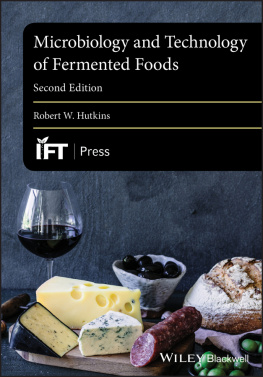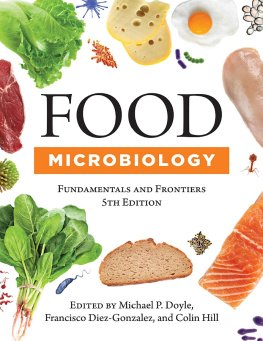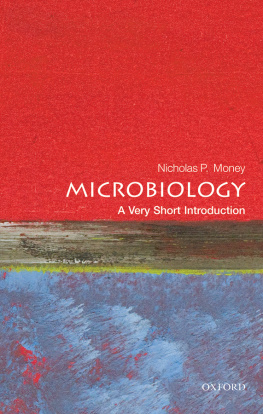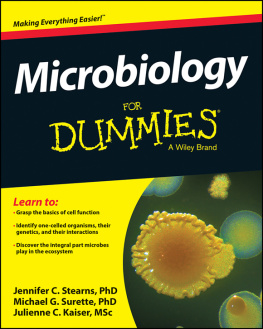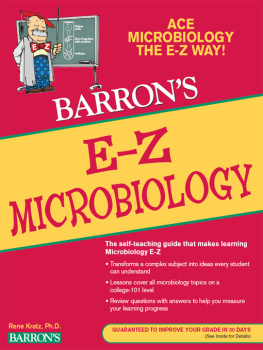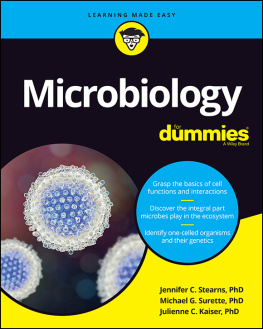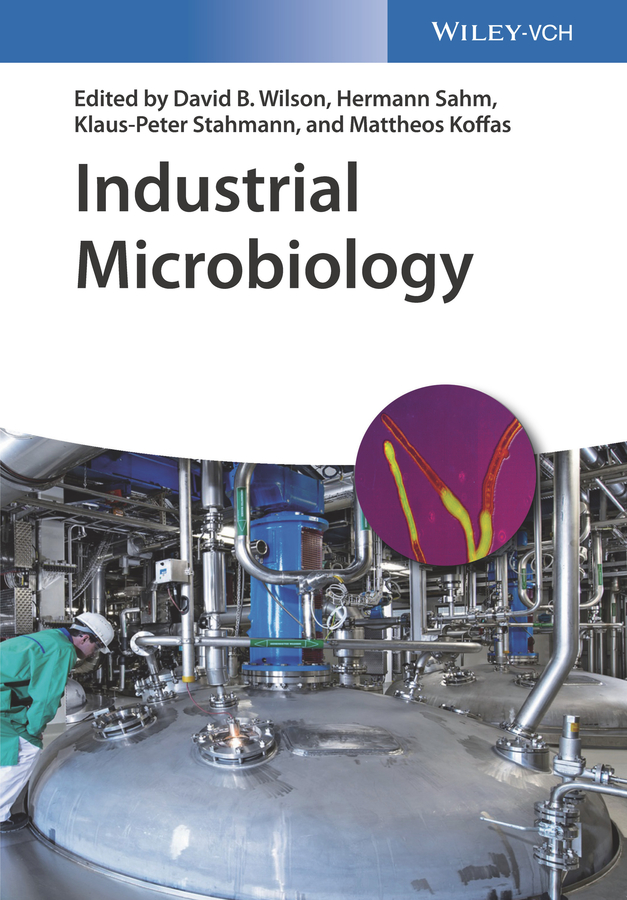
Table of Contents
List of Tables
- Chapter 1
- Chapter 2
- Chapter 3
- Chapter 4
- Chapter 5
- Chapter 6
- Chapter 7
- Chapter 8
- Chapter 9
- Chapter 10
- Chapter 11
- Chapter 12
- Chapter 13
- Chapter 14
List of Illustrations
- Chapter 1
- Chapter 2
- Chapter 3
- Chapter 4
- Chapter 5
- Chapter 6
- Chapter 7
- Chapter 8
- Chapter 9
- Chapter 10
- Chapter 11
- Chapter 12
- Chapter 13
- Chapter 14
Guide
Pages
Industrial Microbiology
Edited by
David B.Wilson, Hermann Sahm
KlausPeter Stahmann, and Mattheos Koffas

Copyright
Editors
Prof. Dr. David B. Wilson ()
Cornell University
Department of Molecular Biology and Genetics
Ithaca, New York 14850
United States of America
Prof. Dr. Hermann Sahm
University of Dsseldorf
Universittsstr. 1
40225 Dsseldorf
Germany
Prof. Dr. KlausPeter Stahmann
Brandenburg University of Technology CottbusSenftenberg
Institute for Biotechnology
Universittsplatz 1
01968 Senftenberg
Germany
Prof. Dr. Mattheos Koffas
Rensselaer Polytechnic Institute
Biological Sciences
110 8th Street
Troy, New York 12180
United States of America
Cover
Image credits: Fluorescence of riboflavin in fungal hyphae (Courtesy of KlausPeter Stahmann) and industrial fermenter (Courtesy of martinjoppen.de).
Translation of Chapters 1, 4, 6, 7, 9, and 13 from the German language edition:
Industrielle Mikrobiologie
edited by Hermann Sahm, Garabed Antranikian, KlausPeter Stahmann and Ralf Takors
SpringerVerlag Berlin Heidelberg 2013
SpringerVerlag Berlin Heidelberg is a part of Springer Science+Business Media
All Rights Reserved
All books published by WileyVCH are carefully produced. Nevertheless, authors, editors, and publisher do not warrant the information contained in these books, including this book, to be free of errors. Readers are advised to keep in mind that statements, data, illustrations, procedural details or other items may inadvertently be inaccurate.
Library of Congress Card No.:
applied for
British Library CataloguinginPublication Data
A catalogue record for this book is available from the British Library.
Bibliographic information published by the Deutsche Nationalbibliothek
The Deutsche Nationalbibliothek lists this publication in the Deutsche Nationalbibliografie; detailed bibliographic data are available on the Internet at .
2020 WileyVCH Verlag GmbH & Co. KGaA, Boschstr. 12, 69469 Weinheim, Germany
All rights reserved (including those of translation into other languages). No part of this book may be reproduced in any form by photoprinting, microfilm, or any other means nor transmitted or translated into a machine language without written permission from the publishers. Registered names, trademarks, etc. used in this book, even when not specifically marked as such, are not to be considered unprotected by law.
Print ISBN: 9783527340354
ePDF ISBN: 9783527697298
ePub ISBN: 9783527697311
Cover Design AdamDesign, Weinheim, Germany
This book is dedicated to
Nancy, Allison, Ashley, and Laurie
Ursel, Matthias, and Andreas
Sandra, Samira, and Falk
Amalia, George, and Thomas.
Preface
Nature is by far the best chemist and the best engineer. Nature also has the best engineering process: evolution.
Dr. Frances H. Arnold,
Linus Pauling Professor of Chemical Engineering at Caltech,
2018 Nobel Laureate in Chemistry.
In the endeavor of the chemical industry to reduce dependence on fossil raw materials, the application of microorganisms contributes to an increasing extent. Not only bacteria and fungi but also archaea are able to explore renewable resources efficiently and environmentally friendly and convert them into sustainable products. As an innovative crossdisciplinary field, the application of industrial microbiology will gain importance not only in the traditionally related areas of food and pharmaceutical industry but also increasingly in the chemical industry. Today, the global market for microbial products is in the order of 1011 US$. In many states, funding programs are running to replace significant proportions of chemical processes with biological ones.
The future potential of industrial microbiology lies in the fact that it bundles the knowhow of biologists, chemists, engineers, and bioinformaticians. This leads to a quality that no specialist can achieve on their own. In recent decades, microbiology, especially by the successful approaches of molecular biologists, has developed fundamentally. The foundation of microbial strain development was and is still random mutagenesis and subsequent selection. However, the modern methods of genetic engineering lead to a targeted change in production strains, down to the position of a single base pair in the DNA, more quickly and accurately. This discipline called Metabolic Engineering is not only suitable to overproduce metabolites, but, in the form of the socalled Synthetic Microbiology, will also help to become independent from secondary metabolism of rare organisms such as plants, fungi, or unculturable bacteria. Not a single one of the dangers of genetic engineering feared in the 1980s become true. On the contrary, drugs produced by Genetically Modified Organisms ( GMO s) fill the shelves in pharmacies and are safe and successful.
This textbook is an update of a German edition published by SPRINGER in 2013. Experienced scientists working at universities, research units, or in industry report selected aspects concerning successfully applied processes of industrial microbiology. Representative examples show which processes lead to recyclable materials of special quality. In the first two chapters, a historical overview is given first (, highly developed waste water treatment plants are described, where microorganisms not only have a high potential for biosynthesis but also are suitable for degradation. In the future, we will be well advised to not only produce substances but also to consider during the design phase how microorganisms can quickly degrade them in order to prevent their accumulation in any environment. As microorganisms play key roles in nature's material cycle, they might become more important to close cycles urgently needed for human economy.
We are grateful to our colleagues who contributed to this textbook by writing their chapters. It was a pleasure for us to cooperate with internationally recognized scientists. Our colleagues in industry deserve special praise for sacrificing nights or weekends for their contributions. Sometimes, graphically presented relationships had to be simplified in their complexity without getting wrong. We thank Susanne Nieland, MSc, who did not give up until both discussion partners, authors and editors, were satisfied with a recognizable focus of a black and white or a rarely colored graphic. Furthermore, we are grateful to WILEYVCH, especially Dr. Frank Weinreich and Dr. Andreas Sendtko, for their help and patience because more than one round was needed to reach the wished quality.
Next page

